The first light of dawn found us wrapped in a gentle chill that whispered through the meadows of Kutwal Valley. The world was still, save for the murmur of a gushing stream nearby and the distant clatter from the small kitchen of the only hotel in the valley, where Altaf and Ali were busy making parathas. The comforting aroma of freshly fried bread and brewing tea mingled with the crisp morning air. We had spent the night here—amid the solitude of this hidden gem surrounded by green meadows, snow-draped peaks, and sleeping glaciers.
Our journey to this remote paradise had not been easy. We had left Dasu four hours earlier the previous day, determined to take a lesser-known trail. That decision, meant to add an element of surprise, had instead led to confusion. The path wound through dense forests, split into confusing tracks, and occasionally disappeared altogether under layers of wild growth. Yet, every challenge was worth it when we finally arrived, just as the sky darkened into a deep indigo and the silhouettes of mountains began to merge with the night.
By the time we reached the hotel, exhaustion had washed over us. We could hear the rush of the lake in the distance but could see nothing in the darkness. So we decided to wait for morning — to let the first rays of sunlight reveal what the night had kept hidden.
Morning at Kutwal Lake
When we awoke at 5:30 a.m., the valley was bathed in soft light. Mist clung to the grass and drifted lazily above the water. We walked to the lake, every step echoing against the silence.
And there it was—Kutwal Lake.
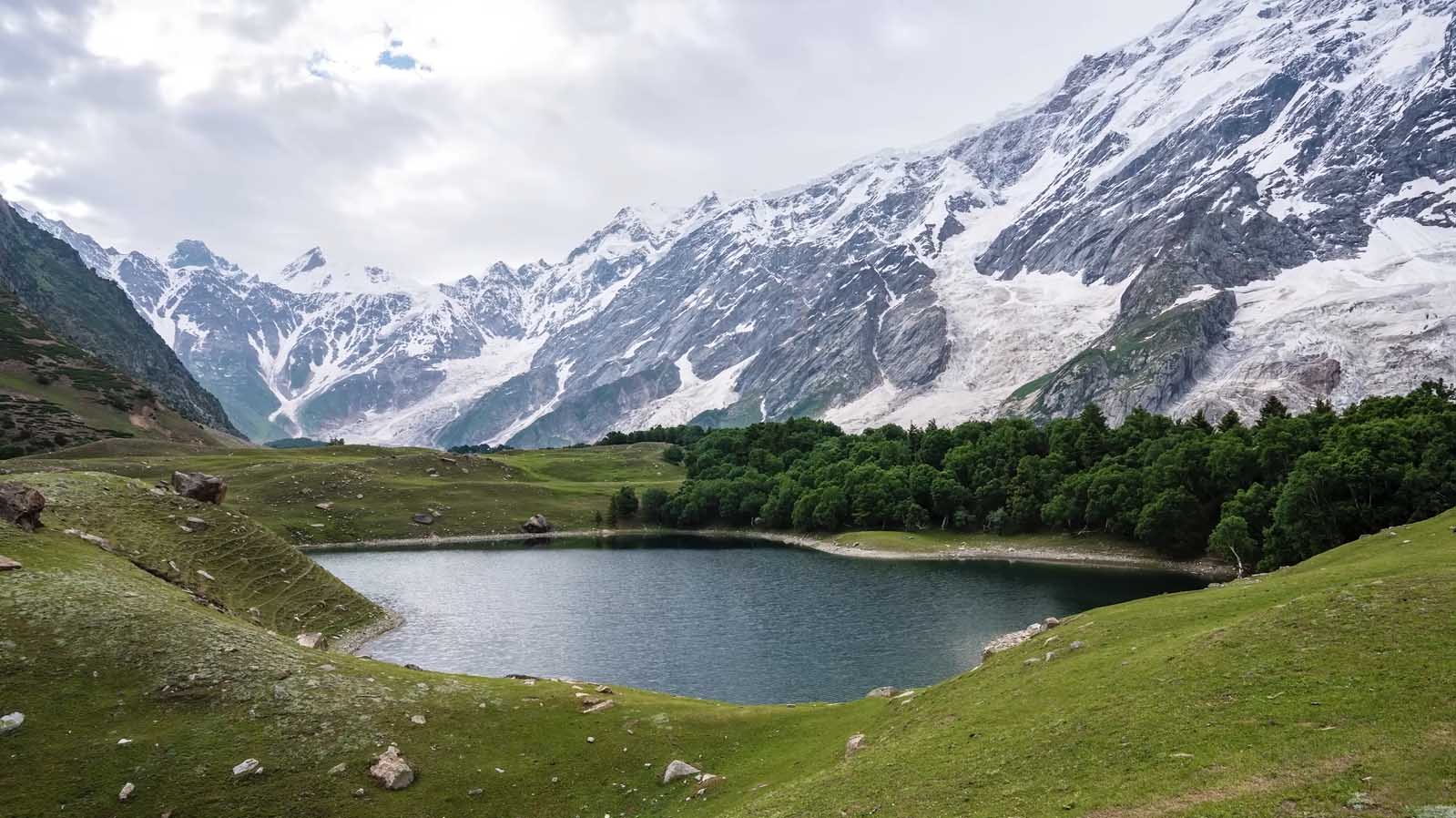
At first glance, the lake itself was mesmerizing, its surface a mirror reflecting the peaks that towered around it. But as I stood there, I realized something profound: it was not just the lake that held the beauty of this place—it was the mountains that guarded it like sentinels, the massive walls of rock and ice that enclosed this secret world.
To one side stood the proud Haramosh Peak, a majestic giant of the Karakoram range. Beside it rose Haramosh Peak II, slightly smaller yet equally magnificent. Behind us loomed the elegant Laila Peak, its slender shape cutting sharply into the sky. These peaks framed the lake in a way that made it feel both sheltered and infinite.
A gentle breeze rippled across the water. The sun, climbing steadily higher, lit the peaks with a golden hue while the lower slopes remained wrapped in shadow. Early in the morning, we managed to capture reflections in the water — a perfect mirror image of the mountains, momentarily undisturbed before the wind reclaimed the stillness.
The Only Hotel in the Valley
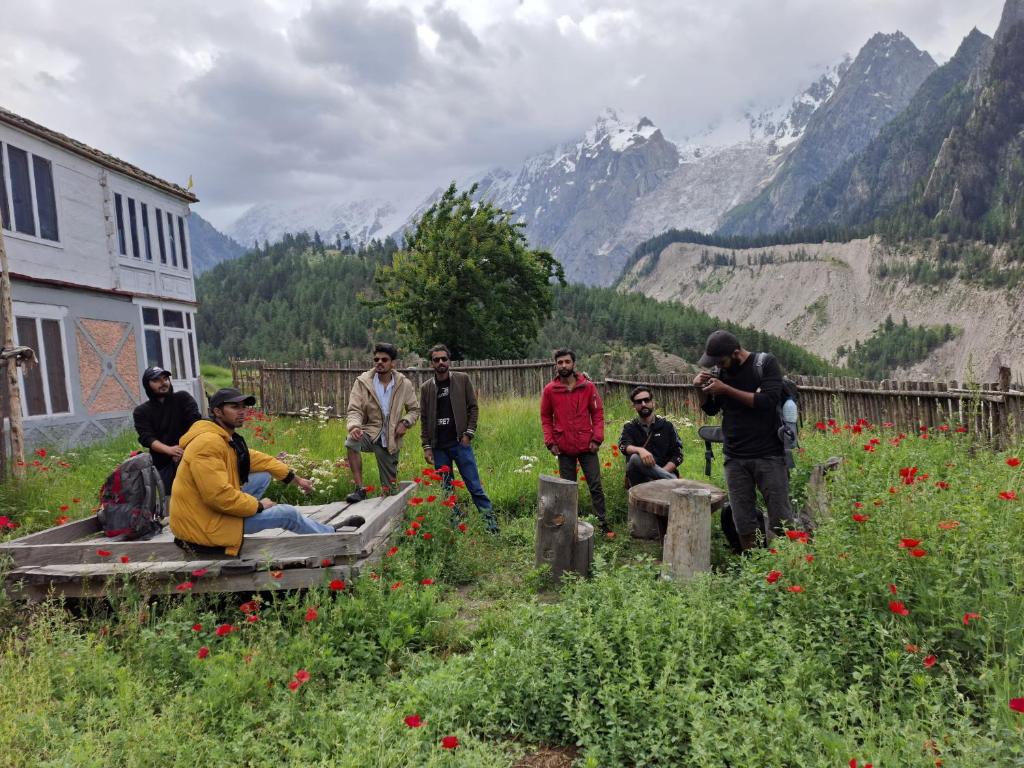
After spending a quiet hour by the lake, we returned to our lodging — the only hotel in the Kutwal Valley. It was far from luxurious but had everything one could need for a comfortable stay: warm food, simple rooms, and, most importantly, the kindness of the locals.
The building stood at the edge of a meadow, framed by wildflowers and the ever-present hum of nearby streams. Inside, Altaf and Ali were already preparing breakfast — parathas sizzling on a pan, eggs frying beside them.
We sat down for a meal that felt like home: parathas, omelets, and sweet tea. “From Karachi in the south to Khunjerab in the north,” I laughed, “you’ll find this same breakfast everywhere in Pakistan.” Altaf chuckled in agreement. It was true — in the remotest corners of the country, simplicity and familiarity have a way of finding you.
The tea was strong and slightly too sweet for my taste. I passed my cup to Altaf. “Mine’s without sugar,” I said, and he smiled, pouring a fresh one for me. Hospitality here was not just an act—it was a way of life.
Camping by the Lake
As the morning progressed, Ali suggested we pitch our tent near the lake to capture better drone shots. I was hesitant at first — still half asleep — but when I saw the footage we had already taken, I knew he was right.
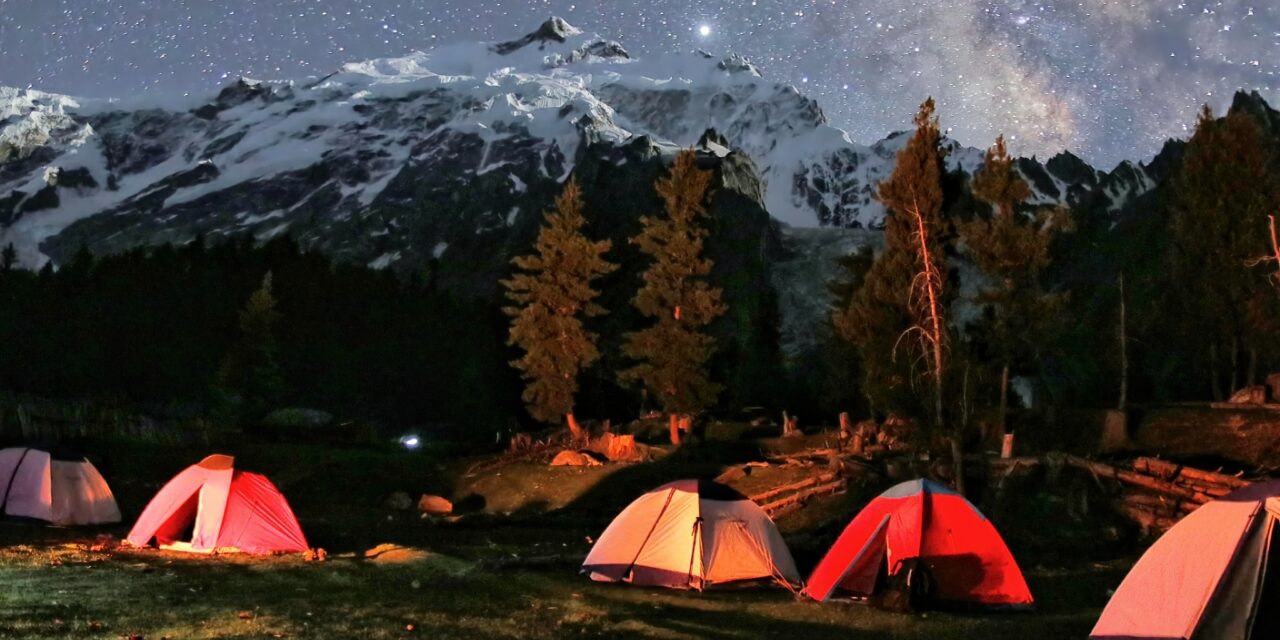
We returned to the lake with our tent, and soon it became the centerpiece of our view. Against the emerald meadows and icy peaks, the bright color of the tent added a touch of human warmth to the vast, untouched landscape.
If there’s one thing I’d recommend to anyone visiting Kutwal, it’s to camp here at least one night. There’s nothing like lying under a blanket of stars, listening to the wind sweeping across the meadows, and waking up to the sun rising over the Haramosh peaks.
The area around the lake is perfect for camping — flat grassy patches, gentle streams nearby, and panoramic views in every direction. Though the hotel provides basic lodging, camping gives you something even more valuable: silence, solitude, and connection with nature.
A Valley Scarred by Fire
As I explored the valley, one thing caught my eye: the remains of fallen and burnt trees scattered across the slopes. The meadows we had passed on our way were not true meadows—they were forests once, now reduced to charred remains.
I couldn’t tell whether the fire was natural or man-made, but it had clearly devastated a large portion of the forest. The blackened trunks stood like silent witnesses to destruction. It was heartbreaking to see how such beauty could be so fragile. Even so, nature here had begun to heal. Wildflowers had returned, grass was growing thick again, and streams still sang through the ruins.
An Unexpected Reunion
Just as we were preparing to leave the lake, we met an old friend — Piru Saien from Karachi. I had met him once before at the Khunjerab Pass. The world is vast, but the mountains often bring travelers together in strange ways.
He had left Dasu four hours before us, taking a different route. His plan was to surprise us, but instead, he lost his way in the forest. “There’s always a path in the forest,” he laughed, “just not always the right one.”
He had ended up spending the night alone near an old shepherd’s hut. “I was lucky,” he said. “The shepherd gave me milk. Otherwise, it could have been a long, cold night.”
We laughed together, though we all knew that such missteps could easily turn dangerous in these parts. I reminded him — and anyone listening — that it’s always better to hire a local guide. In this wilderness, losing the path can happen even to those who have walked it before.
He nodded. “I agree. No adventure is worth putting your life at stake.”
The Return Journey: By the Glacier Route
It was time to leave. We packed our gear, said goodbye to Altaf and Ali, and began our descent through a different trail — the one that passed by the glacier. The morning air was cool, and clouds gathered low across the peaks. Hardly five minutes from the hotel, we reached a wide green plain cut through by silver streams. It looked like a painting come alive.
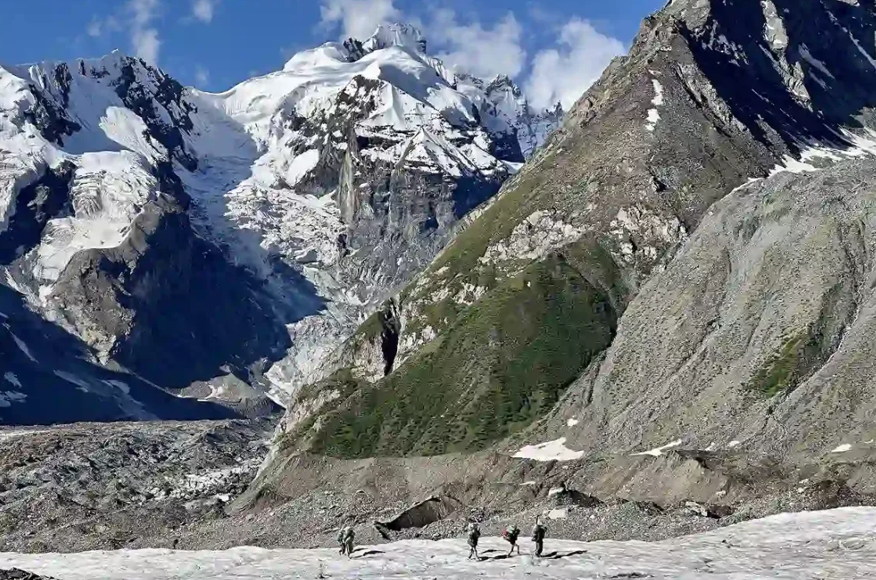
Along the way, we passed small villages nestled in the valley — clusters of stone houses surrounded by fields. Children played in the open meadows, their laughter echoing through the valley. In one village, we met a group of travelers from Karachi who kindly offered us ORS for our upset stomachs. “You’ll need it,” one of them joked, “the track ahead is long.”
Indeed, the trail was demanding but beautiful. Water streams flowed beside us, their crystal clarity a constant temptation. However, as our guide reminded us, not all of them were safe to drink — especially those fed directly by the glacier.
As we approached the glacier, the terrain turned rocky and unpredictable. The ice was buried beneath layers of stones, making it look like an ordinary ridge from afar. We had to step carefully, testing each rock before putting our weight on it. Somewhere ahead, we heard voices — it was a group of trekkers we had met the day before. They had left much earlier than us but had lost their way on the glacier.
“It’s easy to get lost here,” their leader admitted, “even if you’ve crossed it before.”
Our guide, ever confident, led us across safely. Beyond the glacier, the trail opened into a small village named Ezcaray — a perfect resting spot after the strenuous crossing.
Ezcaray: The Village of Rest
Ezcaray was quiet, almost dreamlike. Smoke curled up from the chimneys of a few stone houses, and goats grazed lazily nearby. Most travelers take a break here before continuing their descent. Our track from the glacier to Ezcaray had taken around an hour and a half — far shorter than the lower route that stretched for two and a half hours.
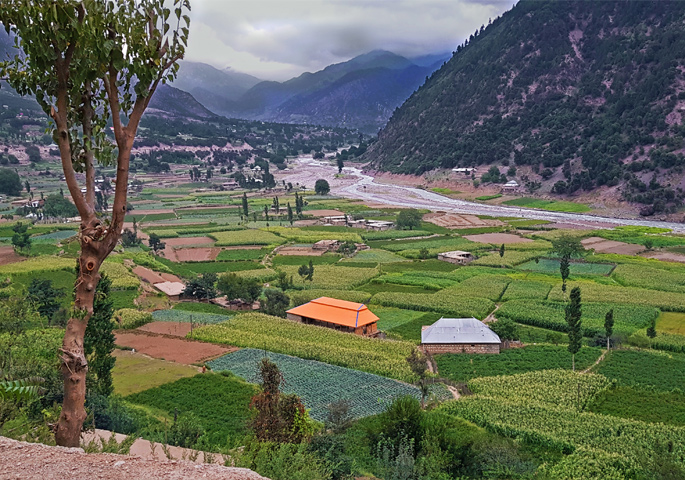
Sitting in the shade, we opened our backpacks for a quick snack — simple biscuits and energy bars. It’s funny how such ordinary food can taste extraordinary after a long hike. I reminded everyone to keep their wrappers. “Let’s not leave anything behind,” I said. “The beauty of this place deserves to stay untouched.”
The valley, pristine as it was, had already suffered enough from the fires. It didn’t need litter too.
From Ezcaray, the descent continued for several hours until we finally reached the end of our trail. When we came up, we had taken the Gouro route — an eight-hour trek. This time, through Ezcaray, it only took five. The difference was remarkable, both in difficulty and in beauty.
The Ezcaray route was shorter, scenic, and diverse — forests, glaciers, and fields blending together in perfect harmony. If I were to recommend one trail to future travelers, it would be this one.
Back to Civilization
When we finally reached Sasi, our jeep was waiting. The driver greeted us with a smile, and we loaded our dusty packs into the vehicle. The trek was over, but the memories lingered like mountain mist.
In total, the trip had cost us around PKR 25,000 — including PKR 12,000 for the guide and porter, food, and lodging. The jeep for our return journey cost another PKR 5,000. Not bad at all, considering the experience we’d gained. The jeep that brought us in had been hired by fellow travelers who didn’t even charge us for the ride. Kindness, I realized, flows as freely in the mountains as the streams themselves.
We said our goodbyes and began the drive toward Minapin in Nagar Valley, about three hours away. The jeep wound along narrow mountain roads, passing through Jaglot before rejoining the Karakoram Highway (KKH). The familiar sight of the Gilgit River running beside the road was strangely comforting. Civilization felt both welcome and intrusive after days in the wilderness.
Arrival at Rakaposhi Viewpoint
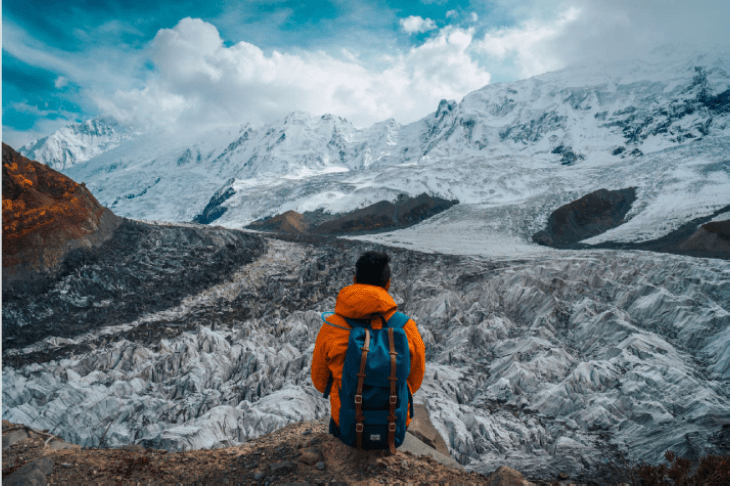
By the time we reached Rakaposhi Viewpoint, the sun was beginning to set. The area was lively — tourists chatting, cameras clicking, tea stalls steaming. From here, the mighty Rakaposhi Peak dominated the horizon, its white crown catching the last light of day.
This was the gateway to Minapin, our next stop. We followed a small road branching off from the viewpoint, climbing gently toward our destination.
Roomy Yurts: Luxury Beneath the Peaks
When we reached our accommodation for the night, it was like stepping into another world. The place was called Roomy Yurts, located within the Osho Thang Hotel.
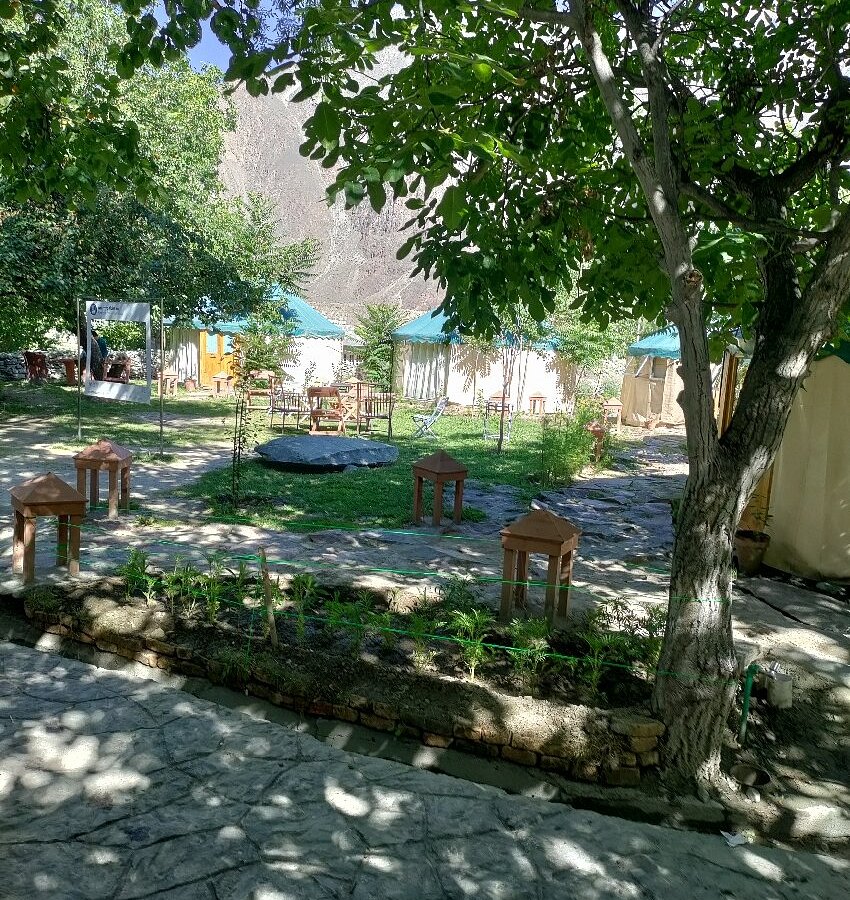
Each yurt stood like a little fortress of comfort amidst the wilderness — circular tents modeled after the traditional Mongolian design, but equipped with modern luxuries. The moment I entered, I was struck by its beauty: soft lighting, a clean and spacious bed, and even an attached washroom. It was both rustic and refined.
“I’ve seen similar tents in Mongolia,” I said, “and maybe in Ertugrul Ghazi too.” We all laughed.
After days of rough trekking, this felt almost unreal — a soft bed, running water, and the faint hum of a heater. Two of us took the bed while a mattress was arranged for the third. We unpacked, stretched our tired legs, and stepped outside. The air was still cool, carrying the scent of pine and earth.
It was already 11:30 p.m., so we decided to dine right there. The kitchen was nearby, and we requested something traditional. Soon, a staff member named Latif brought out a large stone pot, steaming hot.
“This is mutton,” he explained, “and the pot is made of stone — over a hundred years old.”
He told us that the stone not only preserved heat longer but also enhanced the flavor of the food. The aroma was irresistible. We dipped our bread into the thick gravy and tasted it — rich, earthy, and unlike anything we’d eaten before.
“It’s amazing,” I said, savoring each bite. “Tastes like history.”
Reflections Under the Stars
Later that night, as we stepped out of the yurt, the sky unfolded above us — a canvas painted with countless stars. The mountains around Rakaposhi stood like silent guardians. I thought back to Kutwal Lake — to its cold winds, emerald meadows, and mirrored waters — and realized how deeply the journey had changed me.
Traveling through Haramosh Valley is not just about reaching a destination. It’s about the rhythm of footsteps on mountain trails, the warmth of tea shared with strangers, and the silence that speaks louder than words.
In these remote valleys of Gilgit-Baltistan, you learn what it means to truly see — to be small before something vast, and yet, to belong to it completely.
Epilogue: Lessons from the Valley
As we packed up the next morning, preparing to continue our journey northward, I couldn’t help but feel a quiet gratitude. Kutwal Valley had taught us more than we expected — patience, respect for nature, and the value of companionship.
If you ever plan to visit, remember this:
-
Hire a guide — the trails are beautiful but confusing.
-
Carry light — the altitude (about 10,000 feet) can make even short climbs feel heavy.
-
Take your trash back — the valley deserves to remain untouched.
-
And most importantly, take your time.
Don’t rush through the meadows or past the glacier. Sit by the lake. Watch the mountains change color with the sun. Listen to the streams. Let the wind tell you stories that no map or guidebook can.
Because in places like Kutwal, beauty isn’t just something you see — it’s something you feel.
And as the jeep carried us farther down the winding road, I looked back one last time at the snow-capped peaks glistening in the morning light and whispered a silent promise to return someday.








